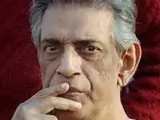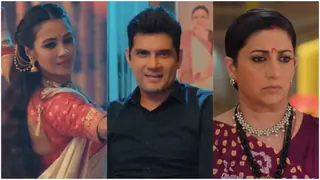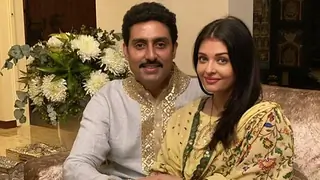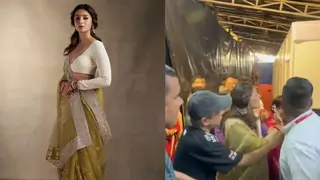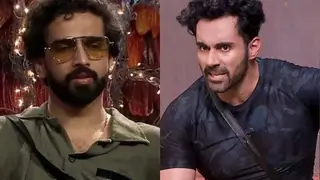
Soumitra Chatterjee and Sharmila Tagore
in Apu Sansar (The World of Apu)
Revisiting Satyajit Ray
An Interview with a Cinema Master
"Everybody has access to me, anyone who wants to see me. . ."
By Bert Cardullo
From 1961 onwards, starting with Teen Kanya (right), you have composed the music for your own films. Before concluding, could you address the subject of music in general and film music in particular?
Yes, of course. Music has been my first love for many, many years — perhaps from the time I was thirteen or fourteen. As a child, I had a toy gramophone and there were always plenty of records in our home. Then later, at Presidency College and while I was at the University of Shantiniketan, I became seriously interested in Western classical music. I did not have very much money in those days, so obviously it was a question of collecting slowly, one movement of a symphony or a concerto at a time.
When I started working, I began to take music even more seriously. I not only began to collect records, but I also got into the habit of buying musical scores. I remember there was a shop in Bombay in those days — S. Rose and Company — which used to sell miniature or pocketbook German scores. These became bedside reading for me. During the day I would listen to the records with the scores in hand, and then when I read the scores again at night, the music would all come back to me. This is also when I started to become familiar with staff notation.
Why primarily the interest in Western classical music?You see, our home has always had a tradition of listening to Rabindrasangeet and Indian classical music. My uncle was a great music lover, and the promising new musicians in those days would come regularly to our place and perform. So, since I was familiar with Indian music — from these private performances and from going to public concerts — I did not feel that there was anything more I needed to do in order to learn about it.
With Western music, on the other hand, I experienced the excitement of discovering something new, completely uncharted territory: Beethoven and others whom I had only read about, doing something that did not exist in our music. I shared this enthusiasm with several friends, and I remember that the salesmen at Bevan & Co., in Dalhousie Square, used to be quite astonished that three or four young Bengalis could be so interested in Western classical music.











